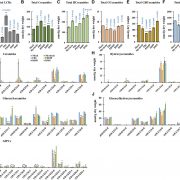
Sphingolipids and Plasmodesmata
Plant Physiology, Plant Physiology: On The InsidePlasmodesmata are cytoplasmic channels that physically connect the cytoplasm and endoplasmic reticulum (ER) of adjoining plant cells. These intercellular channels play important roles during plant development by allowing the molecular exchange of signaling molecules such as transcription factors, RNAs,…

The Regulation of Cuticle Biosynthesis
Plant Physiology, Plant Physiology: On The InsideThe outer surface of the aerial parts of land plants is covered by the cuticle, a waxy layer that provides a barrier against damage caused by environmental factors as well as protection against non-stomatal water loss. Castorina et al. (10.1104/pp.20.00322) now show that both cuticle deposition and…
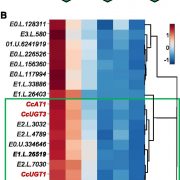
Biosynthesis of Montbretin, an Anti-Diabetes Drug
Plant Physiology, Plant Physiology: On The InsideDiabetes and obesity are major health challenges. Diabetes alone affects over 422 million people worldwide and is among the top ten leading causes of death. Type-2 diabetes (T2D) is characterized by the body’s inefficient use of insulin, which leads to elevated blood Glc levels with detrimental effects…

Villin and GLABRA2 Regulate Root Hair Growth
Plant Physiology, Plant Physiology: On The InsideThe enhanced elongation of root hairs in response to mild water deficiency permits more effective water and nutrition uptake. The growth of root hairs is regulated in part by actin dynamics. Thick actin-filament bundles (“thick bundles”) in the apical and subapical area of root hairs, for example,…
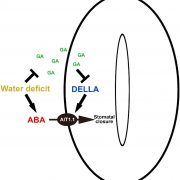
A Novel Form of Crosstalk Between Gibberellic Acid and Abscisic Acid
Plant Physiology, Plant Physiology: On The InsideThe negative interaction between gibberellic acid (GA) and the stress hormone abscisic acid (ABA) has been studied for many years in numerous plant species. These studies suggest that GA and ABA negatively affect each other’s biosynthesis and signaling. The nuclear DELLA proteins suppress almost all…

Self-Incompatibility Can Cause Death in Vegetative Cells
Plant Physiology, Plant Physiology: On The InsideSelf-incompatibility (SI) is a mechanism used by flowering plants to prevent self-fertilization. It is controlled by a multi-allelic S-locus that allows self/non-self-recognition between pistil and pollen. In several SI systems, when male and female S-determinants match, self pollen is recognized and…
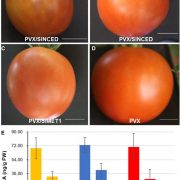
METHYLTRANSFERASE1 and Ripening in Vivipary
Plant Physiology, Plant Physiology: On The InsideDuring fruit ripening in tomato and other flowering plants, the seeds contained within the fruit normally become dormant. However, under certain physiological conditions, seeds can germinate within fruits, a phenomenon called vivipary. Vivipary can substantially reduce yield and product quality in vegetables,…
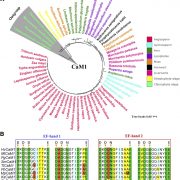
Calmodulin and Salt Tolerance
Plant Physiology, Plant Physiology: On The InsideSalt stress is a major abiotic factor restricting crop growth and productivity. Excess sodium (Na+) causes ion toxicity and ion imbalances. Maintaining lower Na+ accumulation in shoots is crucial for salt tolerant plant species and genotypes under salt stress. Lower shoot Na+ accumulation in plants…

Cyclic Nucleotide-Gated Channels and Temperature Stress
Plant Physiology, Plant Physiology: On The InsideExtreme temperatures often negatively impact plant productivity. Both heat and cold induce transient Ca2+ influx into the cell cytoplasm. Cui et al. (10.1104/pp.20.00591) have investigated the function of two closely related cyclic nucleotide-gated ion channel (CNGC) proteins, OsCNGC14 and OsCNGC16,…

